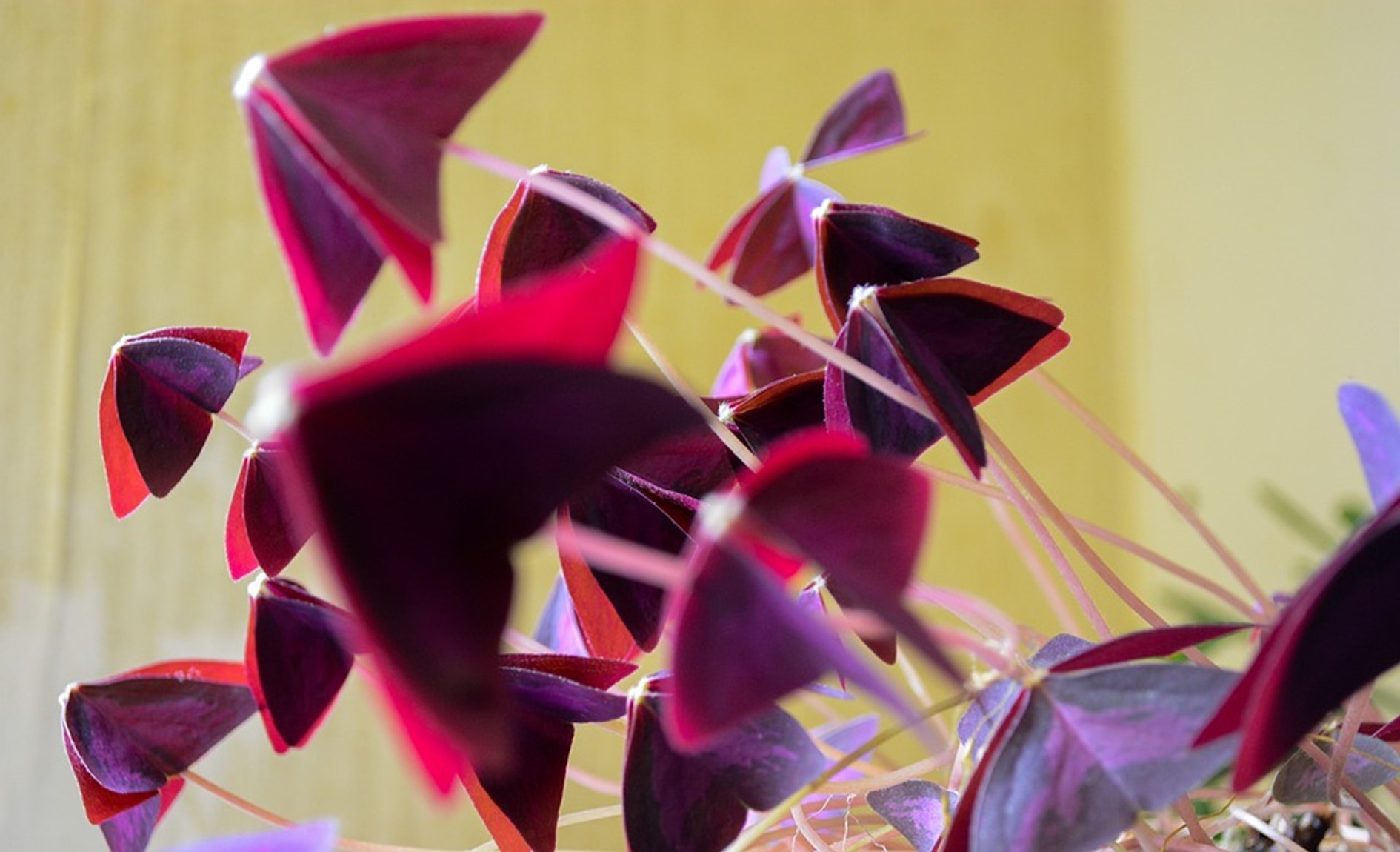With its purple foliage, oxalis triangularis is sure to be the star wherever you place it. Original, graphic, delicate and elegant, this dark beauty contrasts perfectly with blond wood furniture and pale walls. And above all, it's alive: its petals close at night, only to reopen the next day in the light of day.
Provided its growing conditions are respected, this graceful plant, sometimes called "false clover", will flourish and add a touch of color to the very green world of your houseplants throughout the seasons.

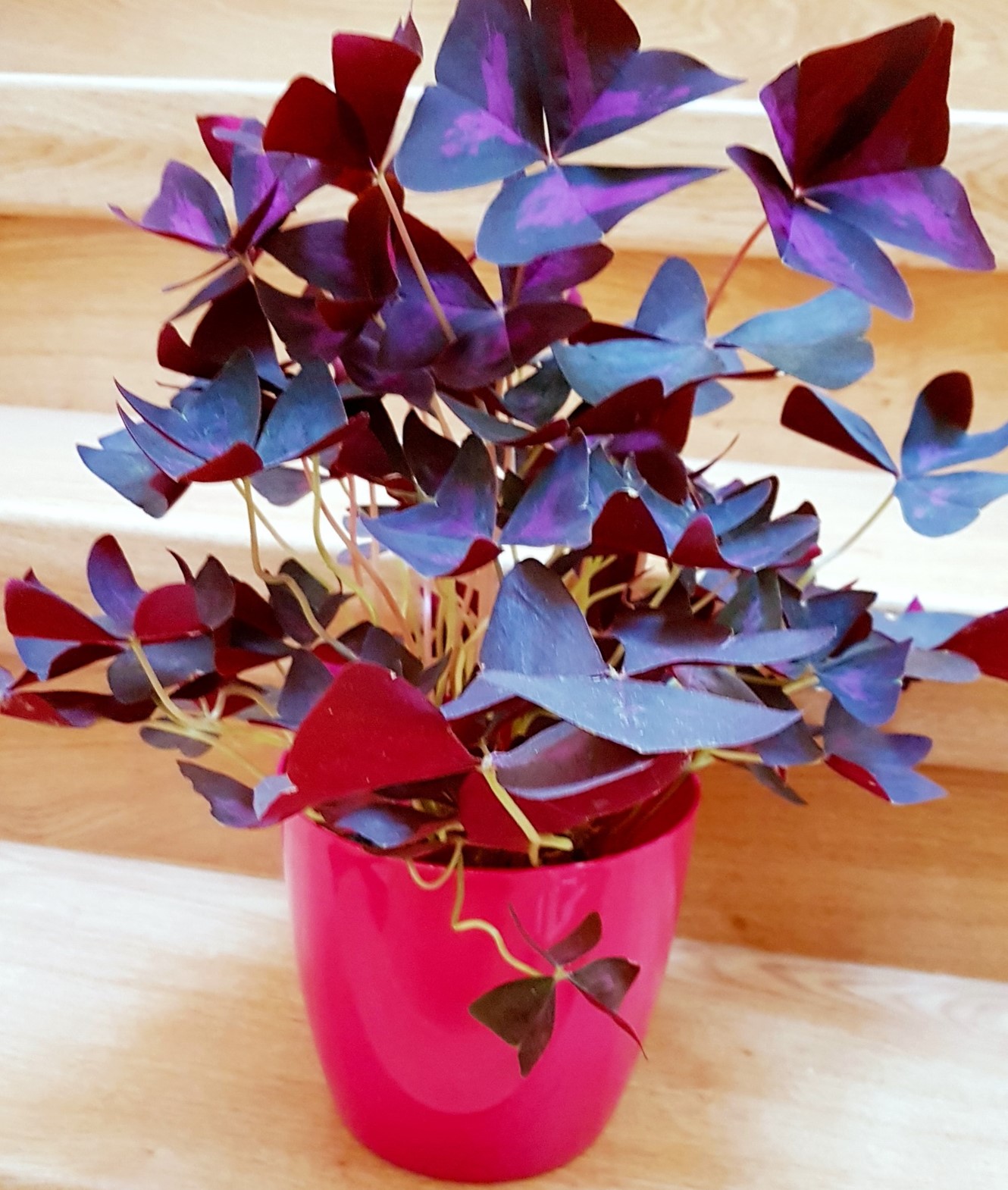
Origin of purple oxalis
Purple oxalis, native to Brazil, is a small perennial with a tuberous stem. It is characterized by bushy, fast-growing foliage and delicate white or pink summer flowers.
Oxalis triangularis consists of a bulb from which emerges a long stem topped by three triangular leaves, one symmetrical to the other. They resemble butterflies.
The plant can be grown both indoors and outdoors, in the ground or in pots. Semi-hardy (-3°C), it is used outdoors in beds or borders. Indoors, grown in pots or hanging baskets, its rapid growth and easy maintenance will delight novice gardeners.
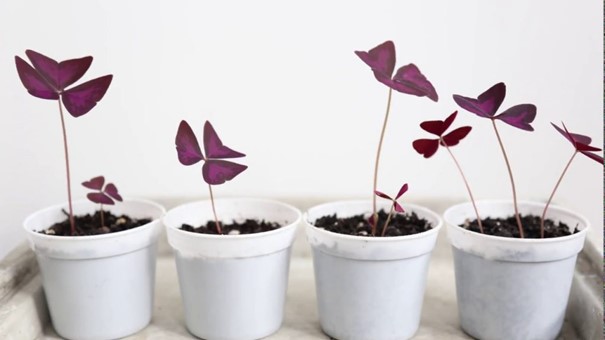
How to care for purple oxalis
Very easy to live with and to grow, oxalis is content with little but still deserves a minimum of attention if it is to develop well and prosper for many years.
You can also encourage the plant's natural cycle by overwintering it in a cool (5° to 12°C), dry room (garage or cellar) from November to February. When you return your pot to the light and resume watering, you'll see new shoots appear.
And if, by mistake, you mistreat it, be aware that your plant will go into dormancy, i.e. everything above ground dies and takes shelter in the bulbs. Don't throw it away! In many cases, it will come back to life on its own if conditions improve (regular watering and sufficient light).
☀ Light
Oxalis is not too demanding when it comes to light. Nevertheless, for best flowering, it's best to plant in a well-lit spot without direct sunlight. You'll see that the leaves turn towards sources of light. They open wide and close gradually at the end of the day. If you don't see any leaf movement, this may be an indication that your plant is lacking light.
❀ Flowering
The plant flowers from June to August, provided it gets enough light. The small, 5-petaled flowers close at night. They produce small capsule-shaped fruits containing the seeds.

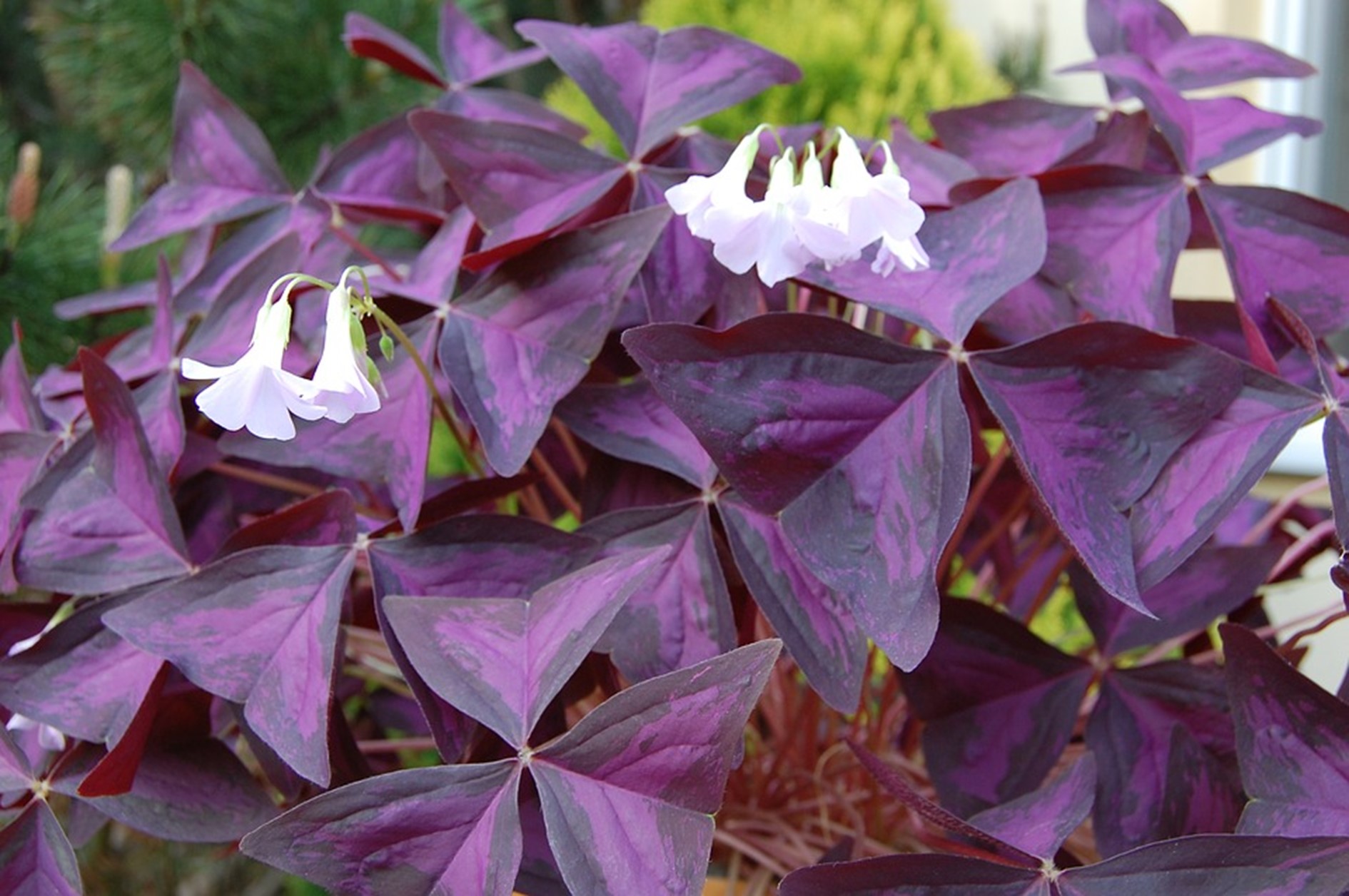
💧 Watering and maintenance
Ideally, soak the soil and let the top dry before watering again. Irregular, random watering is not a problem for oxalis. But for beautiful foliage, be sure to keep the substrate moist from spring to autumn.
Occasional misting to help keep the leaves dust-free is appreciated. But red clover is easy-going and can do without.
🌡️ Temperature
Avoid overheated rooms, as the plant may quickly "age" and lose its pretty colors. You can plant it outdoors, between May and September, in a bright, cool spot.
☠️ Toxicity
Although oxalis is poisonous, it has a very bitter taste that repels anyone who tries to eat it, and this is often enough to deter dogs and cats. The highest concentration of toxic compounds is found in the bulbs, so they're buried out of sight.
🦟 Diseases, pests and parasites
Oxalis are not very susceptible to disease or parasites. Indoors, they can be attacked by red spider mites if the air is too dry. Prevent their attack by regularly watering your plants. Aphids and whiteflies can also appear.
🗑 Potting and multiplication
Repotting: As red clover is reasonably compact, repotting only needs to be done every few years. Perhaps when the plant has spread to all sides of the pot, or when you want it to become bushier.
Multiplication: Creating new plants is very easy. In most cases, there are many bulbs in a single pot. Take a few bulbs and plant them in different pots. Don't place them too close together, to give them enough space to grow quickly.
Compositions and combinations
The cut purple foliage of oxalis triangularis blends well with other colorful flowering plants, as well as plants with decorative foliage, such as chlorophytum, ivy and grasses.

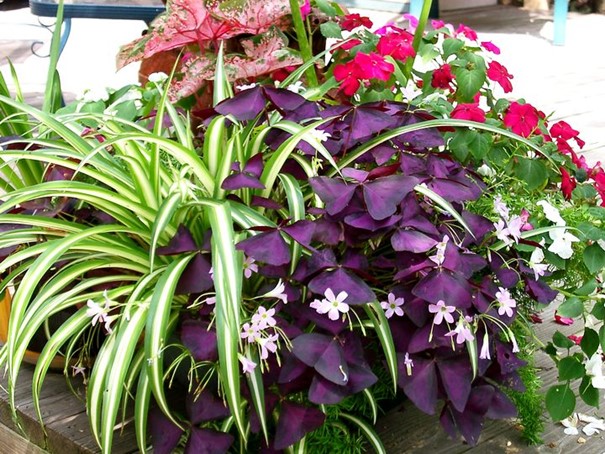
Common questions about oxalis
If you can't find the answer you're looking for in this article, don't hesitate to ask your questions in the comments.
Is this normal?
This is not a problem, but rather a natural whim of the plant. Leaves are sensitive to light. They open wide in bright light and close at low light levels (at night). They also react if you touch the leaves, albeit much more slowly.

My oxalis looks tired, what should I do?
There are several possible reasons: lack of care, poor watering (too little or too much), a cramped plant that needs repotting... Or quite simply, the plant's natural cycle of wilting foliage in autumn/winter.
So don't be surprised if you notice that the leaves of your red clover start to turn brown and become dry after several months of strong growth. The plant is entering a period of dormancy, which normally occurs in summer, allowing the bulbs to rest and recharge before another period of growth.
